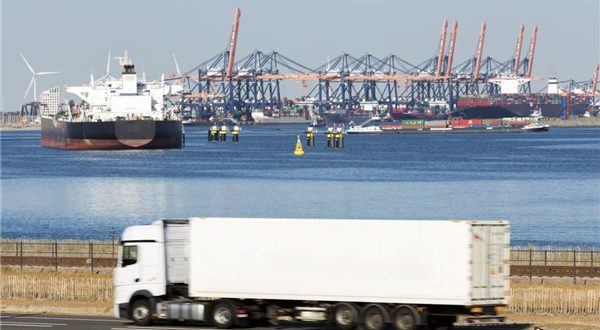Iran`s non-oil exports (excluding crude oil. kiln oil and kerosene. as well as luggage exports) amounted to more than 70 million tons valued at $ 20.9 billion during this period (Iranian Calendar system starting from March 2019). according to Iran Customs.
According to the report. the top five exporting countries in Iran during this period were China. Iraq. Turkey. the United Arab Emirates (UAE) and Afghanistan. respectively. accounting for 75% of Iran`s total export value.
Iran also imported 16.5 million tons of goods valued at $ 21.2 billion during the period.
On Thursday. Iranian Minister of Industry. Mine and Trade Reza Rahmani said that his country is planning to further decline the volume of imports by 2021. in a move to increase national economy’s resistance to US-posed pressures.
Speaking at a specialized meeting. held at the venue of the Ministry of Industry. Rahmani said that Iran’s imports volume will decrease to $10 billion by 2021.
With the coordination made. Iran’s import of products to decline $10 billion by 2021. he added.
Materializing the said objective requires $2 billion worth of investment. he highlighted.
Of total $10 billion. $1.2 billion. $500 million and $2.7 billion will be saved in textile-apparel. cellulose and chemical industries respectively.
Rahmani hailed efforts taken by the Central Bank of Iran (CBI) for the provision of liquidity needed for industries especially in the six months of the current year.
He further pointed to the provision of liquidity as the most important concern of production boom in the country and said. With the coordination made in this regard. giant steps have been taken in this regard in order to settle the problem.
On Saturday. CBI Governor Abdolnasser Hemmati announced that his country’s national currency the rial has regained over 40 percent of its value. to Washington’s disappointment as the US is trying to damage Tehran’s economy with unilateral sanctions.
Inflation has stabilized and the rial has recovered. while the economy has recorded growth over the last 12 months despite the impact of sanctions and the threat of war. Hemmati said on Saturday.
Hemmati noted that `through the guidelines and support of the Leader of the Islamic Revolution and the president. the resistance of the nation as well as the prudence of the Central Bank`. Iran managed to restore stability to the market.
The CBI governor said Iran’s currency regained its value despite the most complicated and unprecedented sanctions and monetary restrictions launched by the US and its regional allies against Tehran.
Iran’s enemies had sought a currency collapse and economic disintegration to make chaos in the country. The rial. however. has rebounded. inflation has been reined in. and the economic growth is imminent. Hemmati said.
Washington’s unilateral sanctions against Tehran began in November 2018. five months after US President Donald Trump withdrew from an international deal on Iran’s nuclear program.
Claiming that the bans were working properly. Trump tightened them in May. only to see that Iran was finding new solutions to recoup the losses.
Last month. Deputy Head of Iran Small Industries and Industrial Parks Organization (ISIPO) Ali Asqar Masaheb announced that Iran will undertake new measures to further strengthen its non-oil exports with a new bill to be tabled at the Iranian Parliament.
Iranian officials started planning for policies to counter the US possible sanctions a year before Donald Trump entered into office in early 2017. The policies are now proving effective as economic indexes are indicating inefficacy of the US pressures.
Earlier in July. Rahmani said that despite US efforts to cripple Tehran’s economy. year-on-year comparison shows that the country’s domestic production has increased in the first quarter of the local calendar year (March 21-June 21).
 Iran Energy News Oil, Gas, Petrochemical and Energy Field Specialized Channel
Iran Energy News Oil, Gas, Petrochemical and Energy Field Specialized Channel




